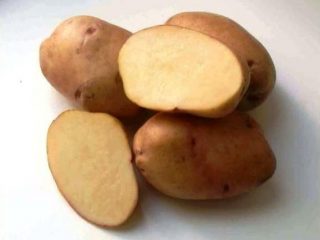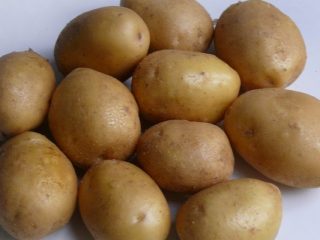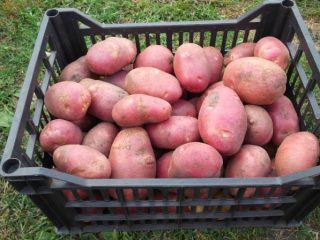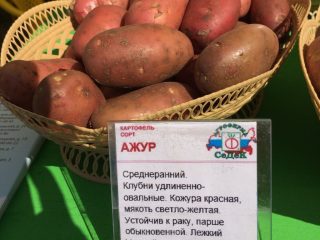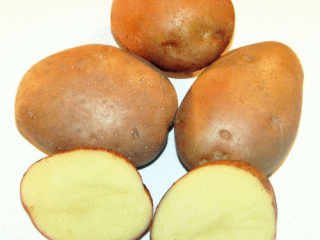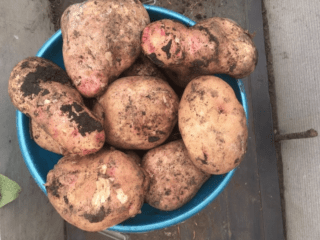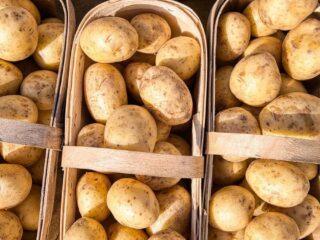Content
Despite the hardiness of most potato varieties and hybrids and their unpretentiousness, plants require care throughout the season. Basic agrotechnical measures include watering - if the bed turns into a “desert”, it is impossible to collect a good harvest of high-quality tubers. It is logical that the need for water increases with increasing temperature and lack of precipitation, so it is necessary to water potatoes in the heat, otherwise the development of the above-ground part and the growth of tubers practically stops.
Is it possible to water potatoes in hot weather?
If the heat (30-35 °C and above) is supplemented by frequent and heavy rains, potatoes can easily get by with natural precipitation. But short showers are practically useless for garden crops and cannot replace watering. The water evaporates very quickly, not having time to wet the substrate to a depth at which the roots can “suck it up.”
When the heat outside is complemented by a long “drought” (two weeks or more), watering the potatoes is vital. Otherwise, you can’t count on a good harvest, its “presentation” and outstanding taste.This condition applies to the entire period of active growing season, including watering potatoes in the heat immediately after planting.
At later stages of bush development in such an “extreme situation,” the growth of existing tubers stops, but the active formation of “secondary”, very small ones begins - by the time of harvesting, their diameter varies from 8-10 mm to 2-3 cm. For long-term storage and they are not suitable for such cleaning.
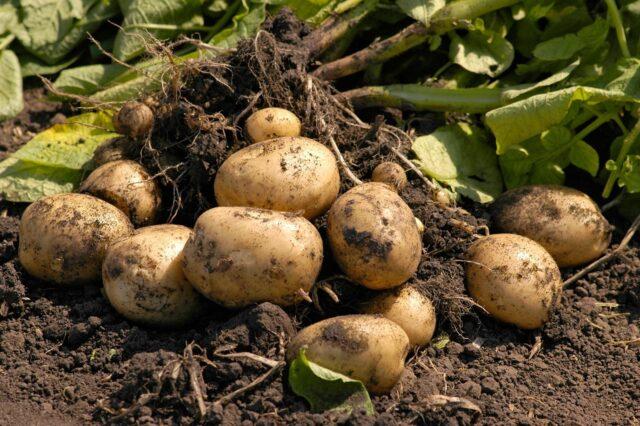
If you neglect to water potatoes in the heat, you can’t count on a good harvest.
The need for regular watering of potatoes in open ground in the heat is quite eloquently evidenced by the appearance and condition of the bushes:
- stopping growth and development;
- drooping, losing tone, soft to the touch stems;
- sagging, thin leaves;
- the color of the leaf blades changing to pale light green or yellowish-green;
- drying, blackening and dying tips of leaves, the smallest and thinnest stems.

To understand that the bushes “suffer from thirst”, just look at them
You can also focus on the condition of the soil. In hot weather, potatoes need regular watering if the substrate at a depth of 5-6 cm crumbles when you try to squeeze it into a handful. A critical water deficit is indicated by soil that has baked into a thick, cracking “crust.”
Not knowing how to water potatoes during a drought, gardeners with the best intentions often turn their beds into a “swamp.”However, you should not be overzealous (both in hot weather and in fairly cool weather). In waterlogged soil, the risk of developing fungal infections increases significantly, primarily, various types of rot and late blight, which are extremely dangerous for tubers.
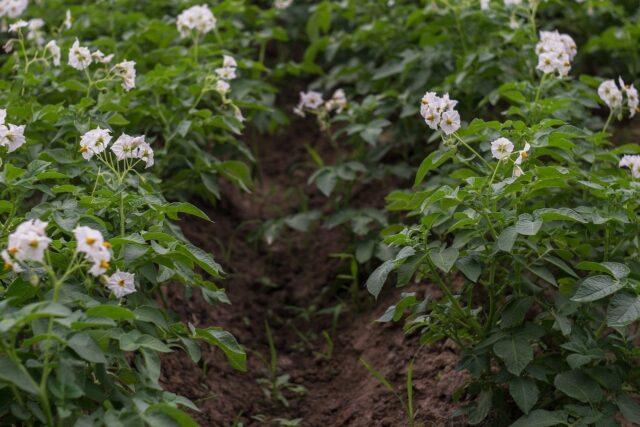
During flowering, the bushes are not watered, but after it it is necessary.
Do I need to water potatoes after flowering in the heat?
The soil in potato beds must be moistened after flowering in the heat, otherwise the yield will decrease by at least a third. The first watering is carried out 4-5 days after the buds wither; it should be especially abundant - up to 20 liters of water per plant.
Further, if the heat does not subside, potatoes are watered based on air temperature, frequency and intensity of natural precipitation. During the season, in beds with early and ultra-early varieties and hybrids, their number after flowering can reach up to 3-4 times, with mid-late and late varieties - up to 5-6. The approximate water consumption rate is 8-10 liters.
However, 2.5-3 weeks before the expected harvest, watering of potatoes is stopped, even if it is hot outside. Otherwise, the tubers become “watery”. Because of this, their shelf life is noticeably reduced, and the risk of developing diseases during storage increases. At the same time, taste and nutritional value suffer.
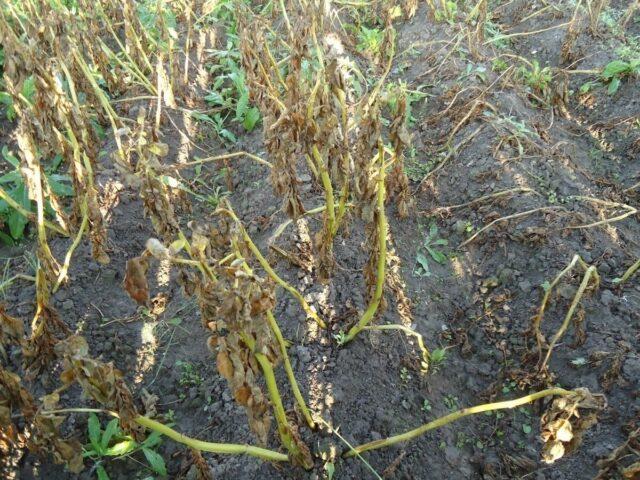
When stopping watering, you can focus on the tops almost completely turning yellow and falling on the bed
When to water potatoes in dry summers
When high temperatures are established for a long time in combination with a lack of precipitation, potatoes should not be watered during the hottest time of the day. On the contrary, it even harms the potatoes. The substrate in the garden bed quickly bakes into an airtight crust. With oxygen deficiency, tuber development slows down greatly or practically stops. And with increasing soil density, the number of potatoes of varying degrees of deformation increases. They are inconvenient to clean and are not suitable for long-term storage.
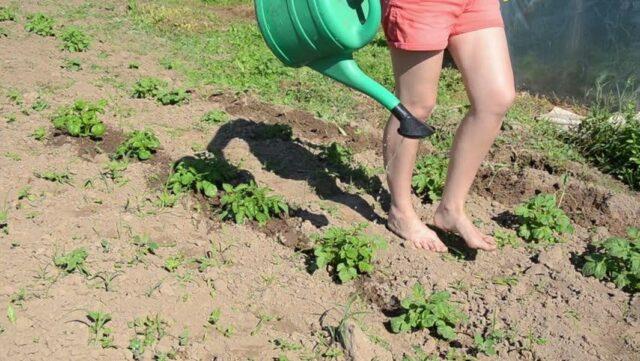
Regardless of the volume, under the hot sun the water consumed evaporates very quickly
In addition, watering potatoes in the hottest weather can cause burns - areas of dried yellow-brown tissue - to appear on the leaves. The drops of water remaining on the surface of the sheet plates turn into a kind of analogue of lenses - the sun's rays are focused and “burn out” the tissues underneath them. This happens especially often when watering is carried out in the morning.
For the procedure to benefit the potatoes, it is necessary to moisten the soil in the evening, when the sun is already setting. After about half an hour, it is advisable to loosen the soil in the garden bed to improve air exchange and ensure water “seeps” into the deeper layers of the soil.
How to water potatoes in hot weather
In the heat, when you need to water potatoes often, in small beds and personal plots, gardeners mainly practice watering along the furrows or each bush at the root “individually.”For large areas, such methods are impractical due to the time and effort required. Therefore, for example, when growing on an industrial scale, various mechanized irrigation systems are used.
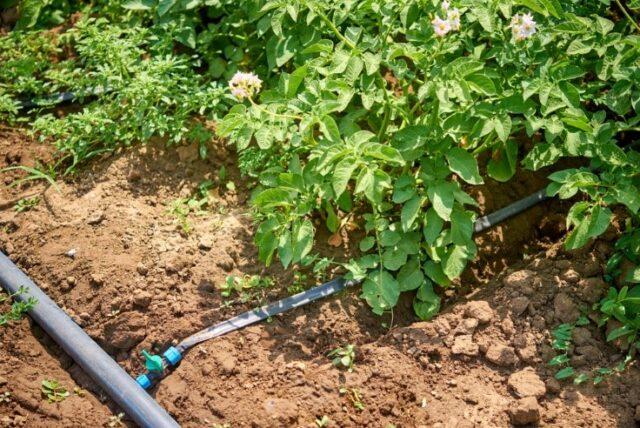
It is advisable that large drops of water do not fall on the plants
Cold water is not suitable for watering potatoes in hot weather. The optimal temperature is 23-25 °C. Tap water is not used directly from the tap; it is first settled or softened in some other way. It is “enriched” with chlorine and fluorine compounds, to the presence of which potatoes react very negatively in the soil.
How often should you water potatoes in hot weather?
Proper watering of potatoes in hot weather in the absence of precipitation is limited to once every 7-8 days. At extremely high temperatures (from 35 °C), the intervals are reduced to 3-4 days. It is impossible to accurately indicate the frequency; in addition to the heat outside, the frequency and intensity of precipitation, it depends on many factors, primarily on the type of soil.
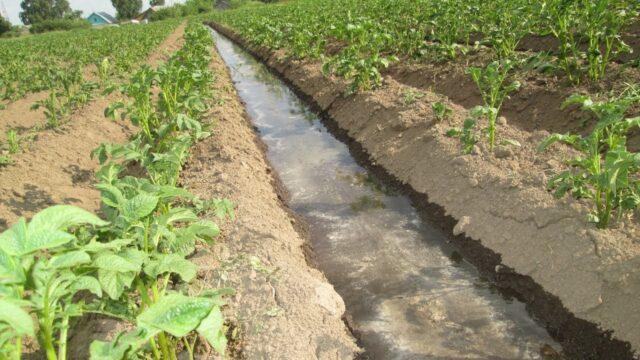
Loose, “light” soil retains water much worse than “heavy” clay or peat soil.
The method of watering also matters. Drip allows you to wet the soil most evenly and deeply with minimal water consumption. And when growing potatoes on an industrial scale in the heat, they often resort to creating a “suspension” of tiny droplets of water over the beds.
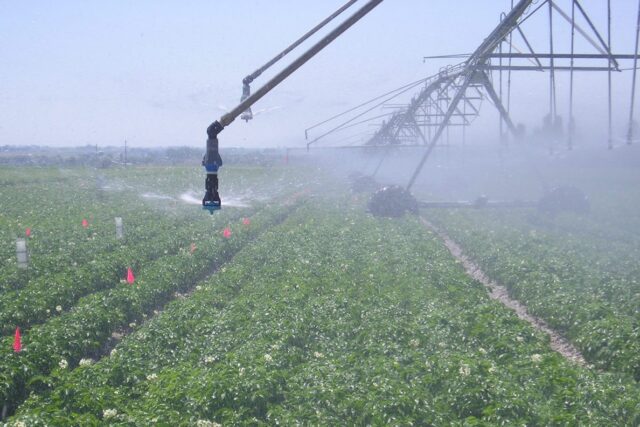
Increased air humidity allows you to water the plantings less often
Conclusion
Watering potatoes in hot weather is not only possible, but also necessary. Otherwise, a prolonged “drought” will inevitably have a negative impact on the volume and quality of the harvest.However, it must be taken into account that at different stages of development, plants’ moisture needs change. Accordingly, during the season, water consumption rates and intervals between watering potatoes in the heat vary markedly.
